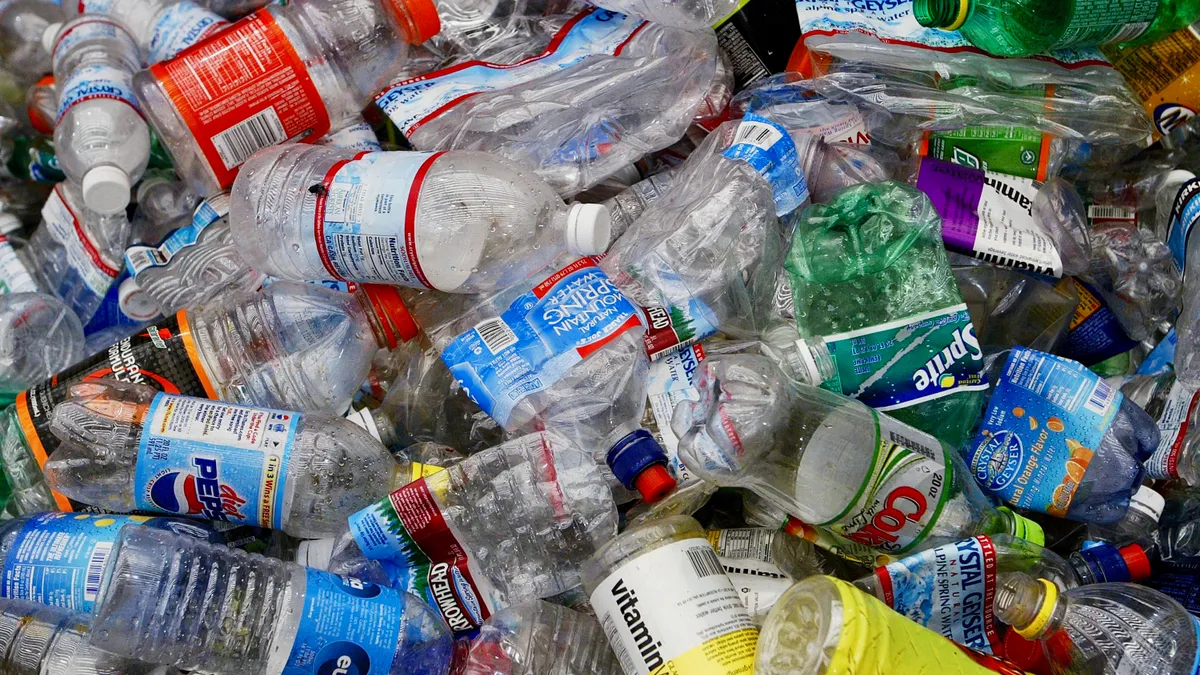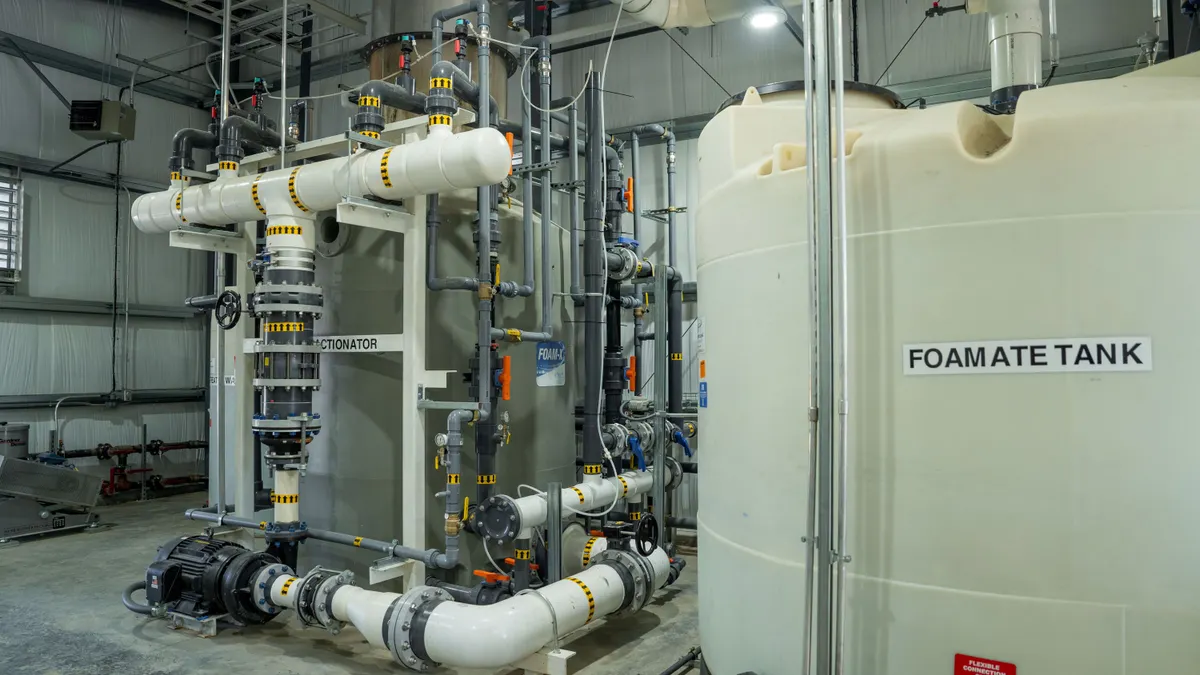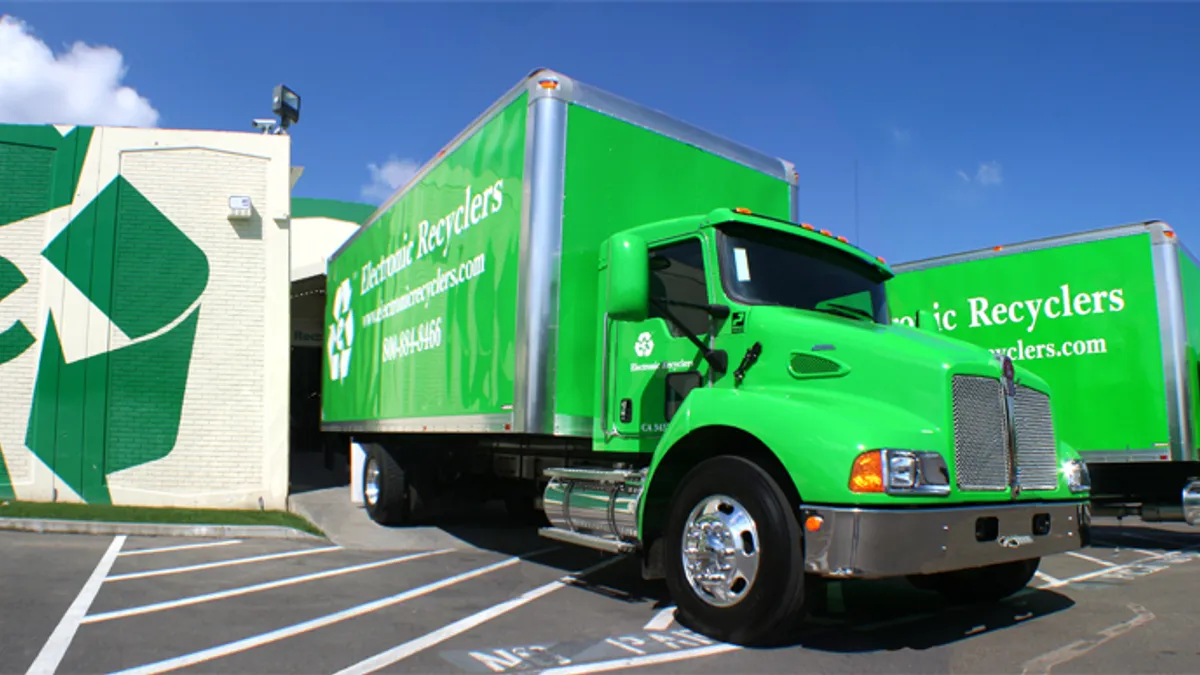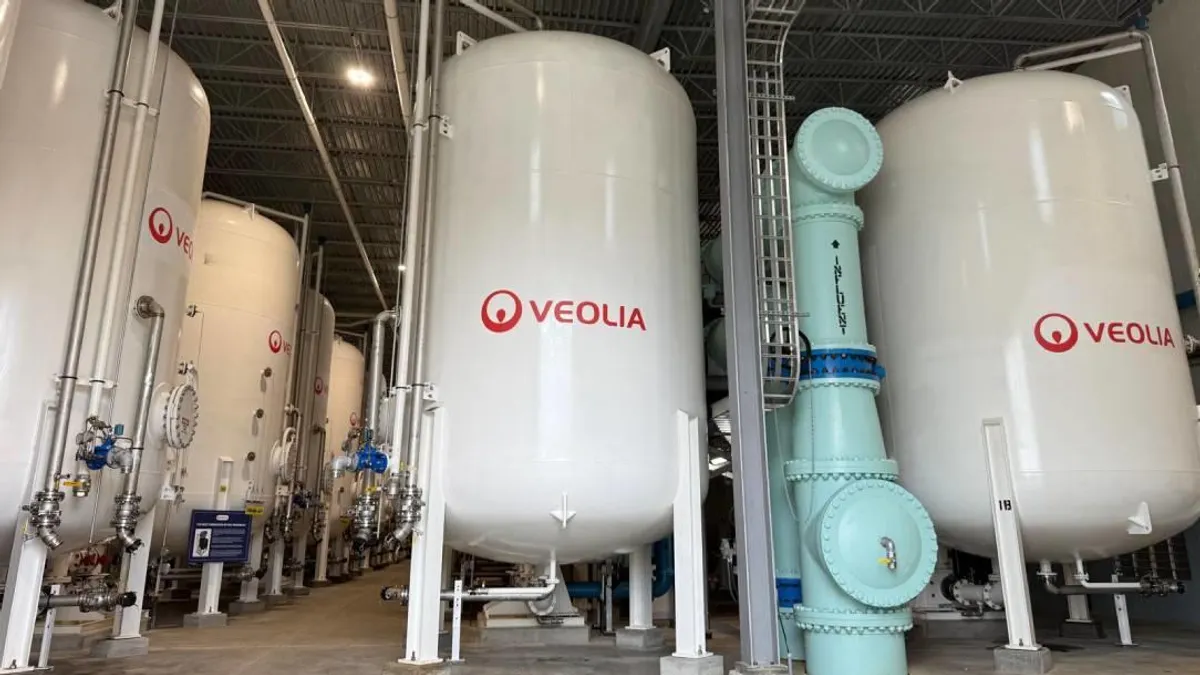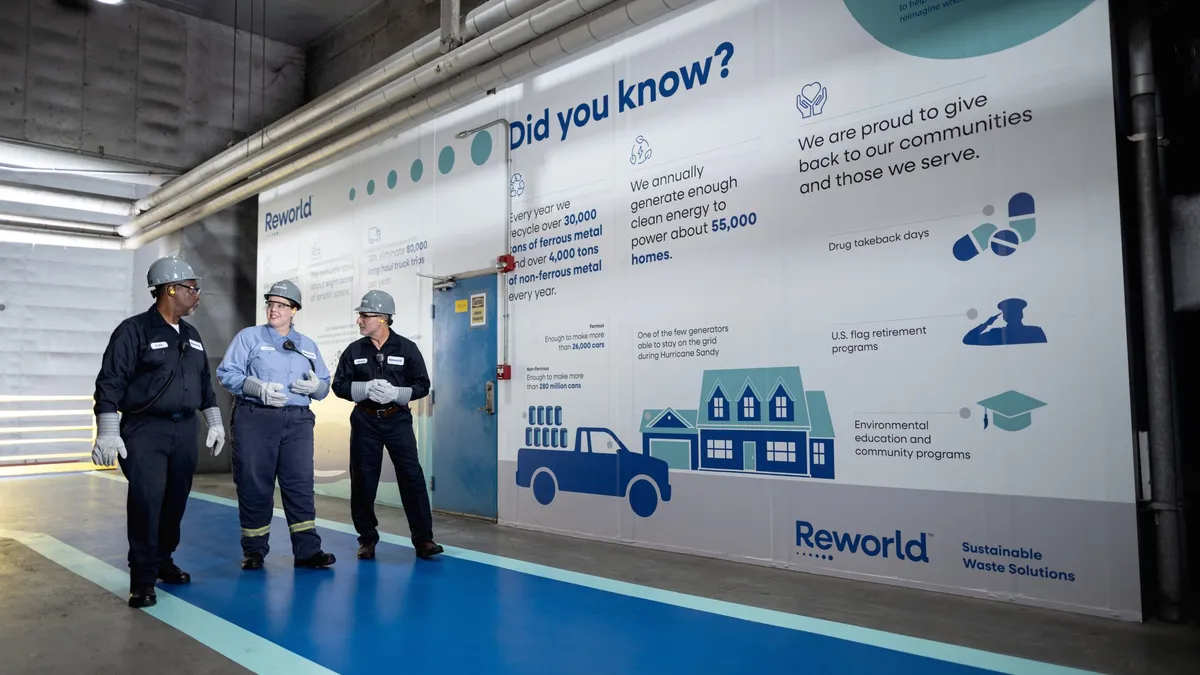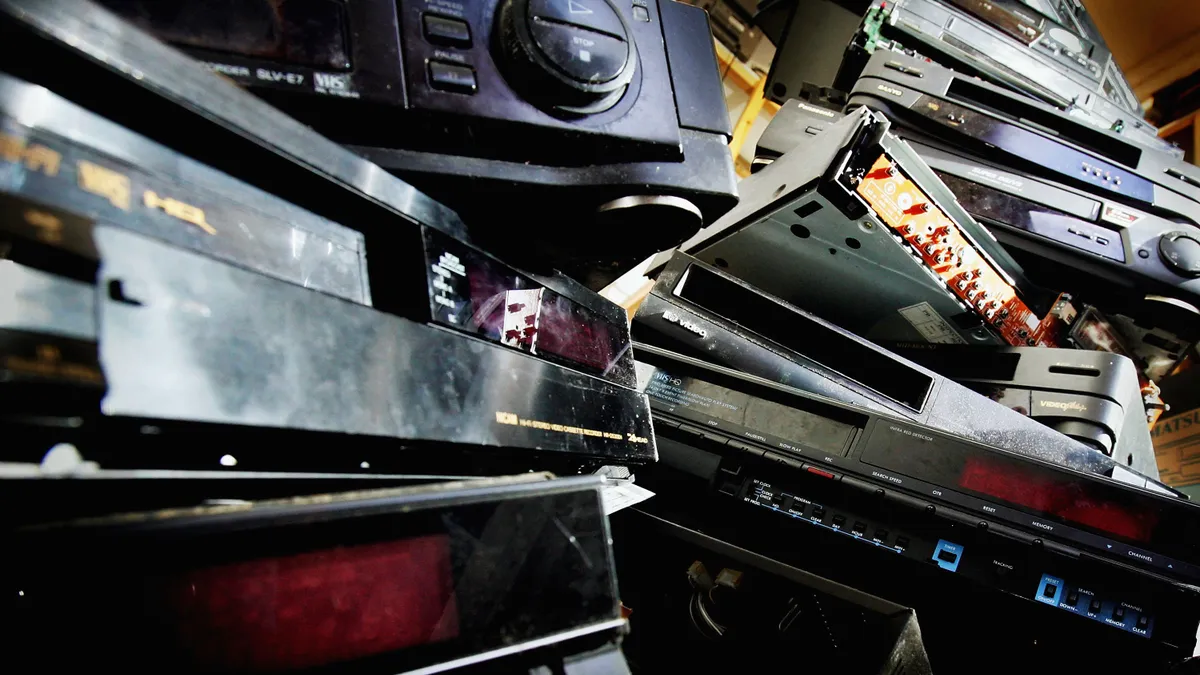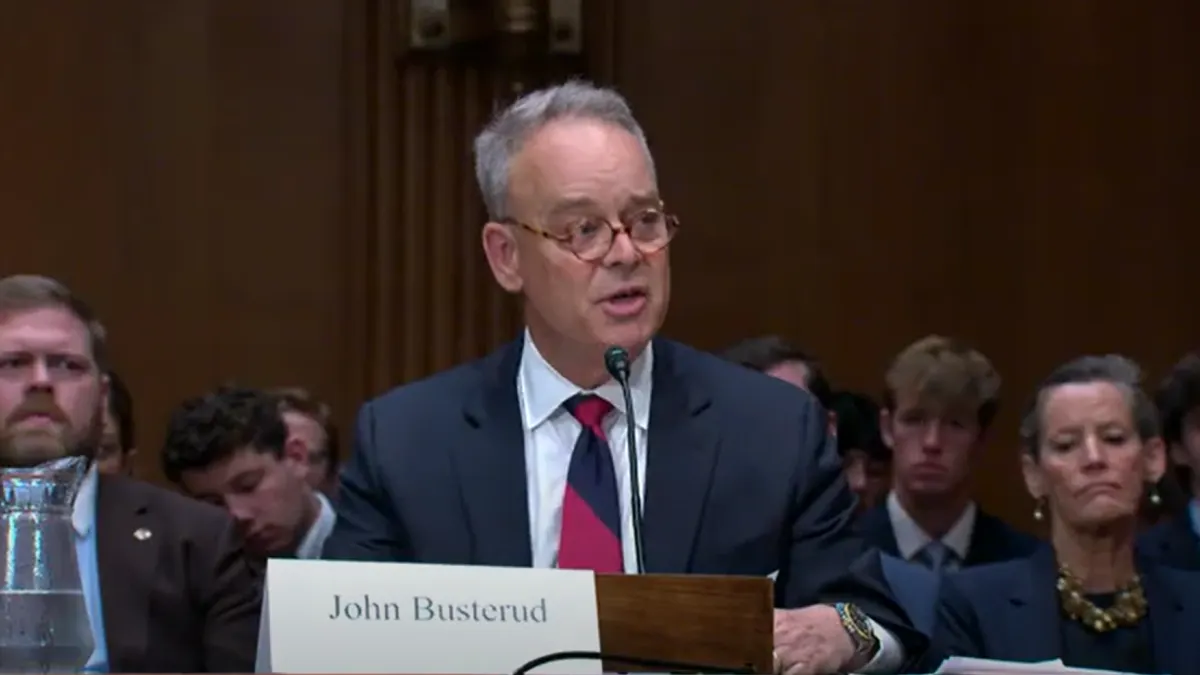A recent report from CalRecycle shows that just seven bottled beverage manufacturers have met the state’s minimum recycled content threshold, due to go into effect next year.
Under a law passed in 2020, all bottlers must use at least 15% postconsumer resin, or PCR, in their plastic beverage containers beginning at the start of 2022. The report, which covers 2020, showed few of the 69 bottlers that sell drinks in California hit the mark. Less than half even reported enough data on their PET content, the most common plastic for bottles, to determine their bottles’ current level of recycled content.
The seven bottlers that meet the threshold include Pepsi Cola Bottling Group, Nestlé Waters US and Niagara Bottling, but major beverage manufacturers like Coca-Cola and Anheuser-Busch are behind.
| Beverage Manufacturer | Amount of Virgin PET in Pounds | Amount of PCR in Pounds | Percent of PCR |
|---|---|---|---|
| Premium Waters, Inc. | 2,246,797 | 5,804,651 | 72% |
| Chameleon Beverage Co. | 1,081,718 | 980,463 | 48% |
|
CG Roxane - Crystal Geyser Alpine Spring Water |
31,837,225 | 18,850,486 | 37% |
| Nestlé Waters US | 32,343,777 | 15,732,608 | 33% |
| Danone Waters of America, Inc. | 1,226,104 | 374,278 | 23% |
| Niagara Bottling, LLC | 105,271,174 | 25,587,469 | 20% |
| Pepsi Cola Bottling Group | 79,500,562 | 17,794,919 | 18% |
| Hydration Source LLC | 3,385,526 | 456,198 | 12% |
| Dolgan California LLC | 1,138,983 | 147,974 | 11% |
| Coca Cola North America, a division of The Coca Cola Company | 154,101,331 | 17,468,040 | 10% |
| Whole Foods Market | 91,356 | 9,136 | 9% |
| West Coast Liquidators Inc. | 858,787 | 66,550 | 7% |
| Anheuser-Busch LLC | 30,826 | 1,622 | 5% |
| Suja Life, LLC | 751,285 | 15,195 | 2% |
Table excludes companies that reported zero pounds of PCR, or reported no data at all. Full report available here.
“I think given the choice the corporations would go with the lower-cost item. If a virgin resin is lower cost, they would go with that,” said Jeff Donlevy, general manager with Ming’s Recycling in Sacramento. “I don't know that they're [increasing their PCR content] for a circular economy. I think they're doing it more to comply with legislation.”
Outside of local mandates, many large beverage brands have also made commitments to gradually increase the amount of recycled content in their bottles. For example, several major brands agreed to using 30% PCR by 2025 when they signed on to the U.S. Plastics Pact last year.
PepsiCo recently announced it would cut virgin plastic 50% per serving by 2030, in part by using 50% recycled content in its packaging and moving all Pepsi-branded U.S. products to 100% recycled PET. In California, its bottles contained 18% recycled content during the reporting period.
BlueTriton Brands, which took over Nestlé Waters of North America’s bottled beverage portfolio in April, has stated it plans to use 25% recycled PET in all its bottles by this year and 50% recycled PET by 2025. Nestlé Waters US reported using 33% recycled PET in its plastic beverage containers in California in 2020.
Several large brands appear behind on meeting both the California mandate and their own goals. Coca-Cola reported data from all affiliated bottlers operating in the state showing just 10% recycled content. That's below next year's mandatory minimum, but it's also far below the corporation's goal to use 50% recycled material in all packaging by 2030.
In a statement, Coca-Cola spokesperson Bailey Rogers said that the brand’s supply chain was disrupted by the pandemic, but that it is “continuing to invest in recycled PET in California and beyond so that we can meet the threshold when the law goes in effect.”
Even within the same brand, different divisions reported varying levels of recycled content usage. For instance, Danone's PET bottles used 23% recycled content, well above next year's requirement. But the company's HDPE and PP divisions, roughly a third of its business in the state, did not report using any recycled content.
Representatives for PepsiCo, Nestlé Waters and Danone did not respond to requests for comment.
One beverage manufacturer, CG Roxane, says the company has already exceeded the mandatory minimum thanks to its own in-house recycled PET facility in San Bernardino.
The facility buffers CG Roxane from some of the supply chain issues related to the COVID-19 pandemic and other challenges that have plagued less vertically integrated manufacturers, Facilities Project Manager Luke Genthe said in an email.
Genthe said that the escalating mandates will start to put a “squeeze” on the growing market for clean PET flake, something the company is preparing for by opening a second recycled PET plant in Tennessee next year.
“Material availability can be a challenge,” Genthe said. “The recycling industry has a hard limit of available feedstock based on how much people recycle.”
Overall, recyclers and beverage manufacturers are confident they'll still be able to meet the threshold next year. But the state's content minimum rules will ratchet up: 25% in 2025 and 50% by 2030.
That has brands worried the supply chain can't provide the amount of material necessary.
“A lot of people [are] competing for a finite amount of material,” said Spencer Pederson, vice president of federal affairs at the Consumer Brands Association (CBA). “The collection is not being increased at the rate of demand.”
Boosting supply
Stakeholders across the recycling supply chain are searching for ways to increase the supply of postconsumer plastic as all of these goals approach.
John Hewitt, senior director of state affairs for CBA, said a near supermajority of the trade organization's membership was concerned about an impending bottleneck in the supply of postconsumer PET material to achieve the escalating mandates. He said technology improvements throughout the supply chain would likely be necessary to recycle more quickly and efficiently to meet demand.
Recycled PET is also used for other consumer goods outside of bottles, such as polyester fibers for running shorts and shoes. Collection of PET plastics is not matching the pace of that demand, CBA said, leaving bottle manufacturers to compete with other manufacturers who may be willing to pay more for recycled PET.
“The margins are probably a little bit better on a fancy pair of running shorts than they are on a bottle," Pederson said.
It’s not just brands that have noticed supply is tight: recyclers have become concerned as well.
Donlevy of Ming’s Recycling, who is also a member of the Statewide Commission on Recycling Markets and Curbside Recycling, said the container redemption program in California doesn’t go far enough to incentivize the collection of high-quality plastics.
In particular, he’s worried that bottle redemption centers in the state are concentrated where land and labor are cheap. Without the redemption centers, bottles get placed in curbside recycling, where they’re bundled up into more contaminated bales and are less likely to find their way back through the recycling stream and used to make new bottles, Donlevy said.
“There's a concern that as these postconsumer content mandates increase, it will be a challenge to meet those levels unless the bottle bill is fixed, to help open up more redemption centers,” Donlevy said.
He noted that the Bakersfield area, where land is cheap, has about one recycling center for every 10,000 people. But in Chico, where land is expensive, the last recycling center for the community of roughly 100,000 people shut down last month.
Donlevy is one of many people in the California recycling industry who said significant changes to the state’s bottle redemption program will likely be necessary for it to be successful and meet the growing demand for PET and other recyclable plastics. Though the state passed over a dozen recycling bills by the end of its legislative session this year, legislators couldn’t reach agreement on any major changes to the state’s container redemption program.
“There needs to be a major overhaul of the program where the state's gonna have to get involved and say we need to have X number of recycling centers, per person or in certain areas,” Donlevy said.
Going national
It's not just California that's watching to see how these policies affect the market; others have also emulated and expanded upon the state's recycled content mandate.
Heather Trim, executive director of Zero Waste Washington, said the California report underscores the need to boost demand for recycled plastic in the state, region and around the country as a way to encourage a greater supply.
"[The results] proves why we need to have these laws passed," Trim said. "The whole point is to be able to get us to the point where we do have supply, and we are actually creating a circular economy."
Washington will begin requiring plastic beverage containers to contain 15% recycled content next year. In 2025, the bill will ramp up to require 15% recycled content in all household and personal care goods. The state will then escalate that level over the next several years, up to 50% by 2031.
New Jersey is also considering a recycled content minimum bill of its own. A bill introduced this year will include minimums that ratchet up every three years for rigid plastic containers and beverage containers until the threshold hits 50% by 2031.
Trim, who has campaigned for the recycled content laws in Washington, said she can feel how the momentum has increased in her state. Federal bills like the Break Free From Plastic Pollution Act and state laws like the one in California have spurred lawmakers in Olympia to act.
“Compared to even just two years ago, or three years ago, we have tons of bills addressing plastics and recycling at the federal level,” Trim said. “Those federal bills are definitely helping at the state level in terms of giving us some forward momentum.”
And efforts in Washington state aren’t over either. In 2022, the state will form a commission with stakeholders to look at additional product categories that may be ready for recycled content minimums. Connecticut will also be working through a similar process following a new law signed this year.
CBA’s Hewitt said Washington’s bill in particular will likely spur a broader change in brands’ recycled content makeup. While plastic beverage containers are produced relatively regionally, consumer goods products like shampoos are produced for a wider, multi-state market area, and brands will need to make big changes to meet the mandates.
“It isn't necessarily today's 15% level that we're concerned about, it's the subsequent steps down the road,” Hewitt said. “You start to build out a scenario and a situation where you have a pretty substantial piece of the marketplace that is all competing for the same recycled content.”



